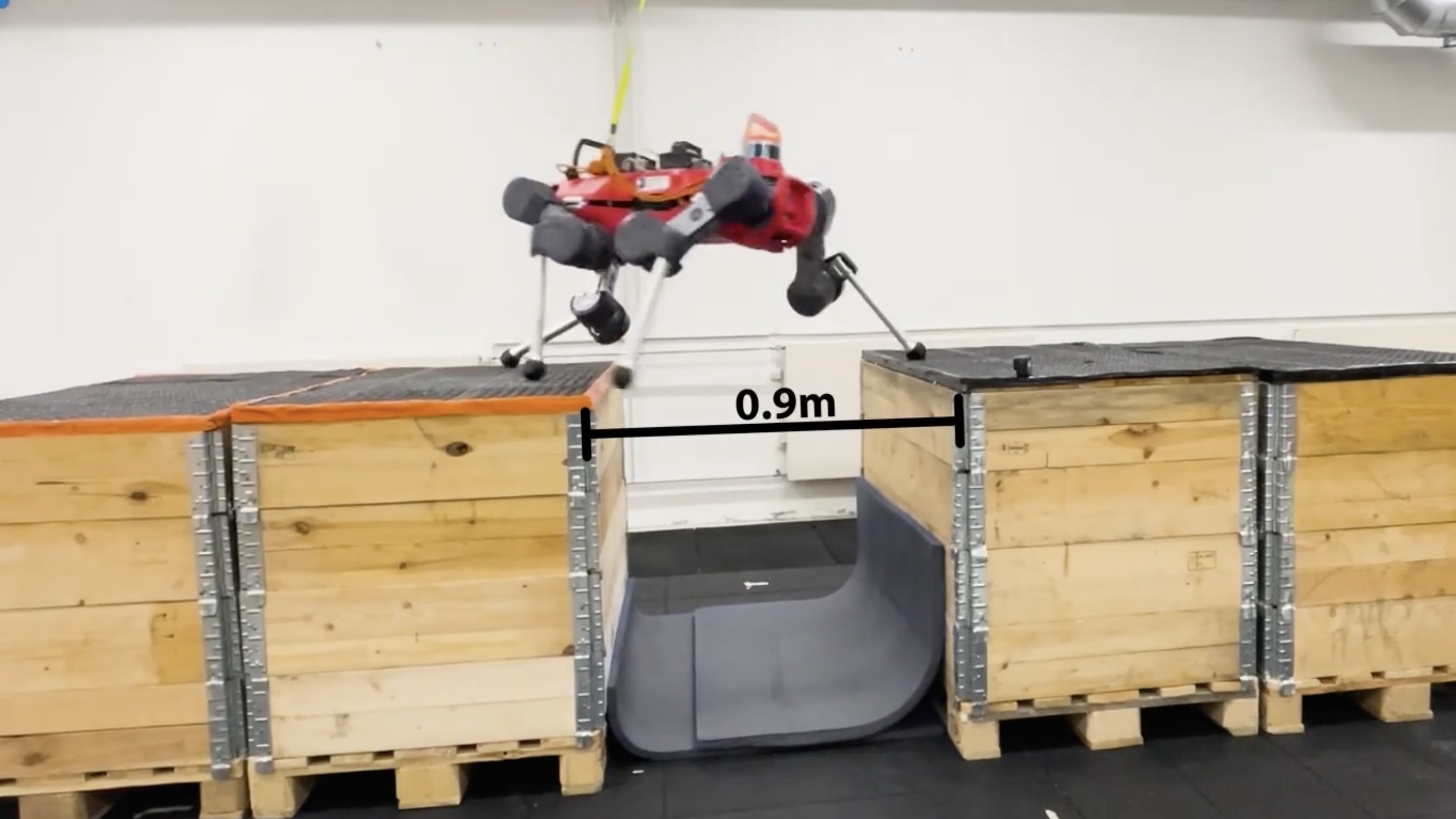
Scientists have used artificial intelligence (AI) to train a four-legged, dog-like robot to tackle a basic parkour course at a pace of up to 5 mph (8 km/h).
In new footage, the quadruped, called "ANYmal," hoists itself on top of a 3-foot-tall (1 meter) wooden crate, before jumping a gap of the same distance between two large wooden crates. It also climbs down from one successfully.
The machine learned maneuvers including walking, crouching, climbing and jumping — which scientists say could one day help it navigate physical hurdles during search and rescue missions.
Robots like ANYmal are colloquially referred to as "robot dogs," because of their backward-facing knees, which give them a certain canine-like resemblance, according to the Institute of Electrical and Electronics Engineers (IEEE).
The scientists described their training methods in a study published March 13 in the journal Science Robotics.
Related: New robot 'explorer' dog will only set you back 63 stimulus checks
"By aiming to match the agility of free runners, we can better understand the limitations of each component in the pipeline from perception to actuation, circumvent those limits, and generally increase the capabilities of our robots," the scientists wrote in a statement. This in turn "paves the road for many new applications, such as search and rescue in collapsed buildings or complex natural terrains," the scientists said.
Most robot dogs, such as Boston Dynamics' Spot, lack this level of agility, the scientists noted. But by using neural networks — a form of AI architecture in which machine learning algorithms are organized like neurons in the human brain — the team trained ANYmal to have heightened perception, locomotion and navigation skills.
They aimed to design the "module pipeline" — the AI training components — based on how free runners might navigate their terrain and hop between obstacles, but using four legs, not two.
After receiving training on parkour courses in a simulation, the robot managed to navigate a real course when put to the test, as shown in the clip. The robot also scuttled nimbly under tables.
This learning pipeline can now be deployed to other dog-like robots that have the requisite hardware — like sensors and actuators — so they can more ably navigate their terrain.
The scientists noted that the robot hasn’t yet been tested in simulated disaster environments, but said they plan to make further improvements to the learning pipeline to improve the robots' agility.







